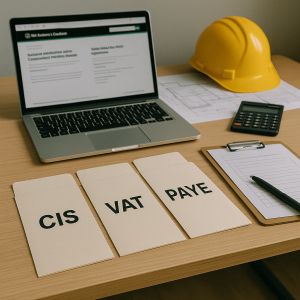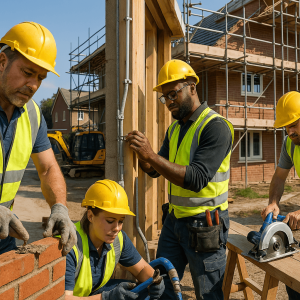📑 Pro Tip: Bookmark this page for quick access later!
Plastering your home can dramatically improve the aesthetics and functionality of your walls, whether you’re upgrading an old home or finishing a new extension. In this detailed guide, we look at the cost to plaster a room, offering insights into different plastering methods and the factors that influence overall costs.
Why Invest in Professional Plastering?
Plastering not only enhances the visual appeal of a space but also improves functionality by creating a durable base for painting, providing a smooth, cleanable surface, better insulation, and concealing imperfections in brickwork. This process is also an excellent opportunity to add decorative features such as mouldings, enhancing the interior design of any building.
Cost Considerations for Plastering a Room
The cost of plastering varies depending on the project’s scale and specifics. Use our plastering cost calculator to get an accurate estimate, which includes material costs, labour, and overheads, making budgeting easier and more precise.
* The above calculator includes:
- Cost of materials, including wastage
- Labour costs
- Overheads and profit margin
- Average UK rates (London rates require an uplift).
Overview of Plastering Techniques
Various plastering techniques are available, each offering distinct benefits and suited to specific needs:
- Wet Plastering: Known for its durability and soundproofing qualities, though it requires a longer drying time and may crack if not applied correctly.
- Dry Plastering: Involves fixing plasterboard to walls before applying a thin plaster skim, offering a faster option with potential added insulation.
- Skim Plastering: Provides a thin, smooth top coat ideal for walls before painting.
- Rendering: Applies plaster to exterior walls to create a smooth, protective finish, often with multiple layers for durability.
Factors Influencing Plastering Costs
The following factors can influence the total expense of a plastering project:
- Plastering Method: Different methods vary in labour and material requirements.
- Room Size: Larger spaces generally incur higher costs due to increased material and labour needs.
- Accessibility: Hard-to-reach areas can prolong the project and raise costs.
- Project Duration: Longer projects naturally increase labour expenses.
- Desired Finish Quality: High-quality finishes or decorative elements can add to the budget.
Effective Plastering Tips
Professional plastering is generally advised for its durability, smoothness, and ability to insulate effectively. While DIY plastering is possible, hiring professionals reduces the risk of imperfections and mess, ensuring a high-standard finish.
Requesting Plastering Quotes
Requesting a free plastering quote from a tradesman often involves detailed work, such as using plastering estimating software to perform a takeoff from your floor plans. Although experienced builders may price based on past projects, fluctuating material prices make it beneficial to use software to provide an accurate quote.
Conclusion
Understanding the plastering methods and cost factors can help homeowners plan effectively. Consulting experts is advised to ensure quality and avoid unexpected expenses.
For accurate budgeting, try our cost calculators available here or explore our builders’ estimating service for a comprehensive project cost breakdown.
FAQs About Plastering Costs
- What is the most cost-effective plastering method?
Dry plastering is often cost-effective for quick results and moderate insulation benefits. However, the best choice depends on the specific needs and location of the project. For tailored advice, request a consultation with our team. - Can costs be reduced by targeting only damaged wall sections?
Yes, focusing on specific damaged areas can reduce costs. Spot plastering or skimming only damaged sections can be a budget-friendly option for smaller repairs. - How long does it typically take to plaster a room?
The duration varies with the room size and plastering method. Most rooms can be completed in a few hours to a couple of days, though complex techniques like wet plastering may take longer to dry fully. - Are there hidden costs in plastering projects?
Additional costs could include wall preparation, repairing underlying issues, and final finishing. It’s wise to ask your plasterer for a detailed breakdown of all potential costs upfront. - Is it economical to hire a professional for minor plastering jobs?
For quality and durability, professionals are generally recommended, even for small tasks. Hiring a tradesman can prevent future repair costs associated with improper DIY plastering. - What are the main benefits of professional plastering?
Professional plastering enhances wall durability, insulation, and aesthetics while reducing the likelihood of cracks and imperfections. If you’re considering plastering your space, get a quote today for more details. - How can I ensure the quality of plastering work?
To guarantee quality, opt for experienced plasterers, check reviews, and ask for a portfolio of past work. Consider using a contract with clear details on the scope of work to avoid misunderstandings.











